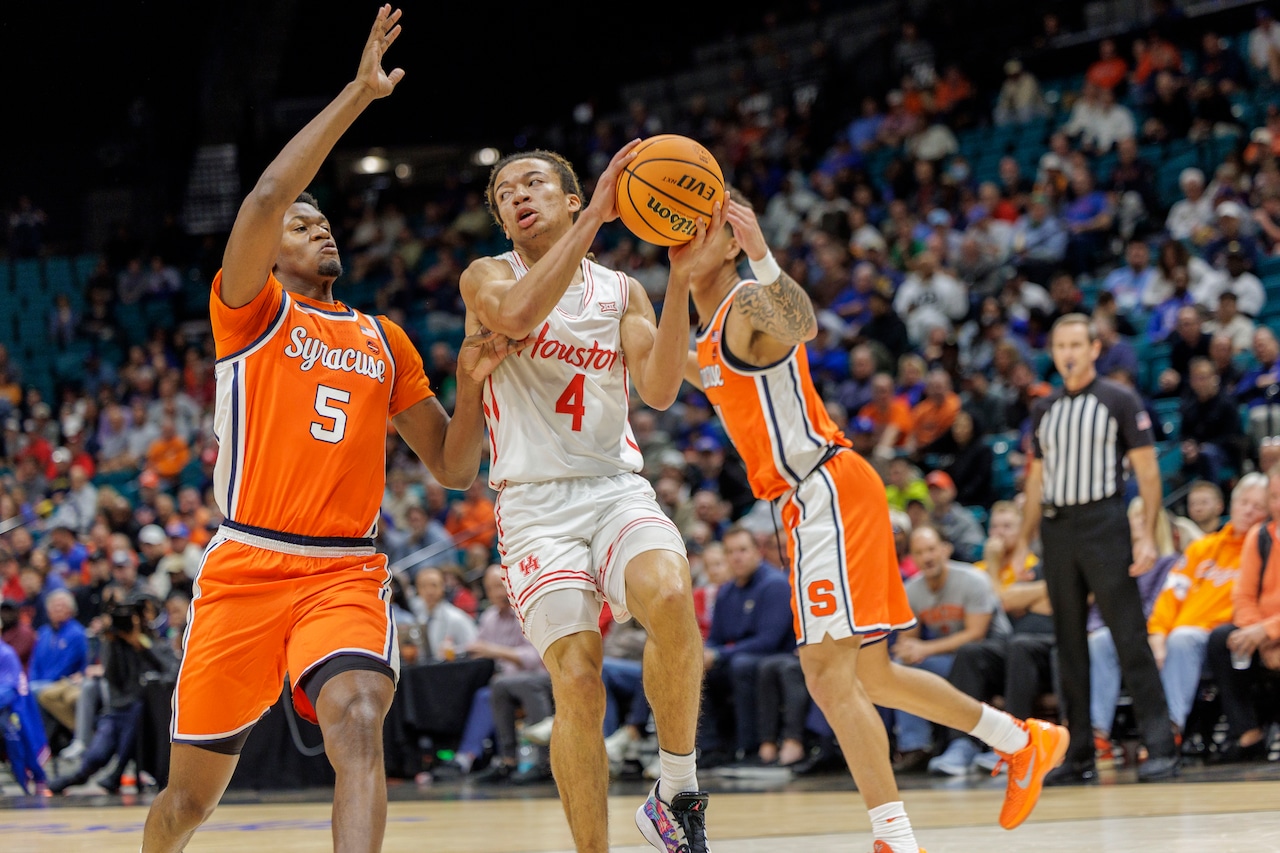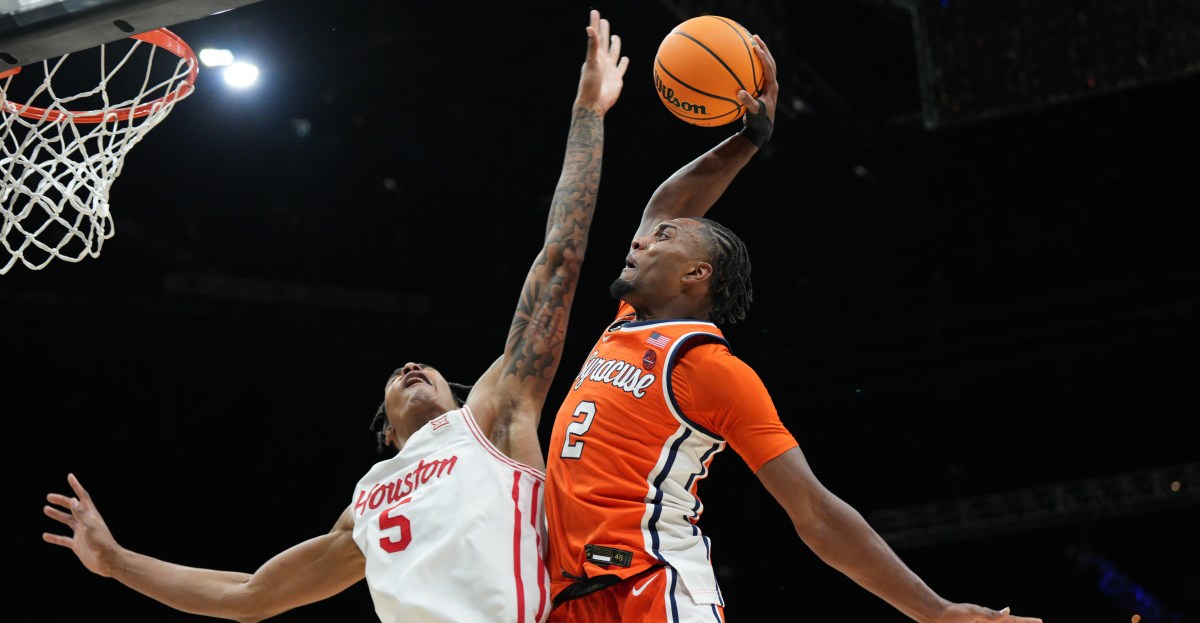1. Forget ‘March Madness,’ Welcome to the ‘November Transaction’
So, Syracuse is playing Kansas. Big deal. Another Tuesday, another basketball game. But don’t let the familiar logos fool you into thinking this is just another early-season tournament. Because it’s not. This isn’t about school spirit or the love of the game; this is the unveiling of the machine, the beta test for the complete commodification of college athletics. The “Players Era Championship.” What a perfectly sterile, corporate-approved, soulless name for the final nail in the coffin of amateurism. This isn’t a championship. It’s a transaction. It’s a proof-of-concept for venture capitalists who see these kids not as athletes, but as appreciating assets on a portfolio, their every dribble and jump shot logged into a predictive algorithm that determines their future market value. And we, the fans, are just the suckers providing the engagement data to fuel the whole grotesque engine.
The Illusion of Sport
They’re holding it at the MGM Grand in Las Vegas, the city built on manufactured hope and statistical certainty, which tells you everything you need to know about the tournament’s true purpose. It’s not about which team is better. It’s about which narrative generates more betting revenue, which player’s biometric data sells for a higher price to insurance companies and ‘performance optimization’ startups. The game itself, the actual 40 minutes of Syracuse Orange versus Kansas Jayhawks, is merely the content designed to keep your eyeballs glued to the screen long enough for them to scrape your data, analyze your behavior, and sell you something. It’s a spectacle, sure. But it’s a hollow one.
2. The ‘Student-Athlete’ Is Officially Dead
Let’s just stop using the term “student-athlete.” Please. It’s an insult to our collective intelligence. It was always a flimsy construct, a legal fiction created by the NCAA to avoid paying players, but now, in the glorious “Players Era,” it’s a flat-out lie. These are professionals. Period. They are employees of a multi-billion dollar entertainment industry, and this tournament is their new corporate retreat. The idea that these young men are balancing a full course load with this high-stakes, high-pressure, nationally televised event is laughable. Because their real education is in brand management, marketability, and ROI. Their homework is maximizing their NIL valuation, and their final exam is their draft stock. Syracuse isn’t just representing a university in upstate New York; it’s a feeder program for a system that chews up talent and spits out data points.
But the real tragedy is that we’ve been conditioned to celebrate this. “Finally, the players are getting paid!” we chant, as if that’s the end of the story. We ignore the fact that they aren’t just being paid; they are being converted into financial instruments. Their bodies, their futures, their very identities are now line items on a spreadsheet, traded and analyzed by people who have never picked up a basketball. This isn’t empowerment. It’s indenture with a better PR team.
3. Your Face Is the Price of Admission
Think you’re just going to sit back and enjoy the game? Think again. If you’re lucky enough to be at the MGM Grand, you’re not a spectator; you’re a component. Every major arena, especially one in Las Vegas, is now a surveillance panopticon. High-definition cameras with facial recognition capabilities aren’t just for security anymore. They’re for marketing. They are tracking your gaze to see which sponsors’ logos you look at the longest. They’re analyzing your facial expressions with emotion-recognition AI to gauge your engagement level second-by-second. Are you excited? Bored? Angry at a bad call? That’s all valuable data. That information is bundled and sold to advertisers, betting companies, and the tournament organizers themselves to ‘enhance the fan experience’—which is corporate-speak for ‘find more effective ways to manipulate you into spending money’.
Smile for the Algorithm
And when you buy a hot dog or a jersey, you’re completing the circuit. Your payment information is linked to your face, your seat number, and your emotional response to the game. They know who you are, what you like, how much you’re willing to spend, and what emotional state makes you most likely to buy. It’s a closed loop of surveillance and consumption, and the basketball game is just the bait in the trap. You paid for the ticket, but the real price of admission is your identity.
4. Syracuse vs. Kansas: The Algorithm’s Favorite Matchup
Why Syracuse vs. Kansas? Is it a classic rivalry? Not really. Is it a compelling storyline? Maybe. But the real reason is much colder and more calculated. Because the algorithm said so. Matchups like these are no longer left to chance or simple bracketing. They are engineered. Data analytics firms, the same ones that predict election outcomes and market crashes, are now in the business of scheduling sporting events. They crunch the numbers: fan base size, social media engagement, historical TV ratings, potential betting lines, player marketability scores. Syracuse and Kansas, with their large, passionate fan bases, represent a perfect storm of engagement metrics. The algorithm determined that this specific game, at this specific time, would generate the maximum possible revenue stream. It’s not sport; it’s content optimization. Every single aspect of this event is A/B tested and focus-grouped into a frictionless, predictable, and highly profitable product.
5. Biometric Billboards on the Court
Look closer at the players’ jerseys. See that little bulge under the fabric? That’s not just padding. That’s the future. It’s a suite of biometric sensors tracking every single physiological data point in real-time. Heart rate, respiration, core body temperature, hydration levels, muscle exertion, caloric burn. This isn’t for the coaches, not really. This data is the real prize of the “Players Era.” It’s streamed directly to the cloud, where it’s analyzed by another set of algorithms. Betting companies can now offer live, in-game wagers on whether a player’s heart rate will exceed 180 bpm on his next fast break. Insurance companies can use the data to calculate the exact risk profile of a player’s body before offering a policy. And the venture capitalists behind the tournament? They’re building the most comprehensive human performance database in history, a goldmine of physiological information that will be worth trillions.
The Quantified Self, The Owned Player
The players have been told this is for their own good, to ‘optimize performance’ and ‘prevent injury.’ And maybe it does. But it also turns them from human beings into walking, breathing data packets. They no longer own their own bodies. Every beat of their heart, every drop of sweat, is a commodity to be bought and sold by unseen forces. They have become biometric billboards, advertising their own physical potential to the highest bidder. Welcome to the era where an athlete’s most valuable statistic isn’t points per game, but terabytes per minute.
6. The ‘Players Era’ Is For The Owners, Not The Players
The name is the most cynical part of the whole charade. “The Players Era.” It’s a masterful piece of Orwellian doublespeak. It co-opts the language of empowerment to disguise a system of unprecedented control and exploitation. Yes, a handful of star players will make a lot of money from their NIL deals, and they will be paraded in front of the cameras as success stories. But they are the exception, the cover story that masks the reality for the other 99%. For most of these athletes, the “Players Era” means signing away the rights to their own biometric data, having their every move tracked and analyzed, and being subjected to the cold, impartial judgment of algorithms that will decide their worth. The real beneficiaries are not the players. They are the owners. The tech companies that provide the surveillance infrastructure. The data brokers who sell the information. The private equity firms that fund the tournament and take a cut of every transaction. The players are just the raw material, the crude oil in a new digital economy. They get a paycheck, but the owners of the refinery are the ones who get rich.
7. How to ‘Watch’ (And Be Watched)
They’re offering a free stream. How generous. But in the digital age, ‘free’ is never free. It’s the most expensive price you can pay. That “free” stream is a Trojan horse. To access it, you’ll have to provide an email, maybe link a social media account. And once you’re in, their hooks are in you. The video player is embedded with trackers that monitor everything. They log how long you watch, when you pause, what you rewind. They use ad-insertion technology that’s so sophisticated it can serve you a different commercial than the person watching in the next town over, based on your browsing history. Did you just search for a new car? Here’s a car commercial. Did you ‘like’ a vacation photo on Instagram? Here’s an ad for a resort. The game isn’t the product; you are. The stream is just the mechanism to package you up and sell you to advertisers. You came to watch Syracuse and Kansas, but the real game is being played for your data, and you’re losing.
8. The Future is a Subscription to Fandom
This is just the beginning. The Players Era Championship is the pilot program. The goal is to splinter the entire sports media landscape. Forget your cable package. In the near future, you won’t just subscribe to a streaming service; you’ll subscribe to a team. Or even a single player. Want to watch all of the Syracuse games? That’ll be the ‘Orange Tier’ for $19.99 a month. Want access to exclusive player biometric data and predictive analytics for your fantasy league? That’s the ‘Premium Player Package’ for $49.99. Fandom itself is being packaged and sold back to us. The communal experience of rooting for a team will be fractured and siloed behind a dozen different paywalls. The world where a whole city could gather to watch their team is dying. It’s being replaced by a world of individualized, algorithmically-curated content streams, designed to maximize profit by isolating us from each other. This game isn’t a game. It’s a preview of a very bleak, very profitable future.


